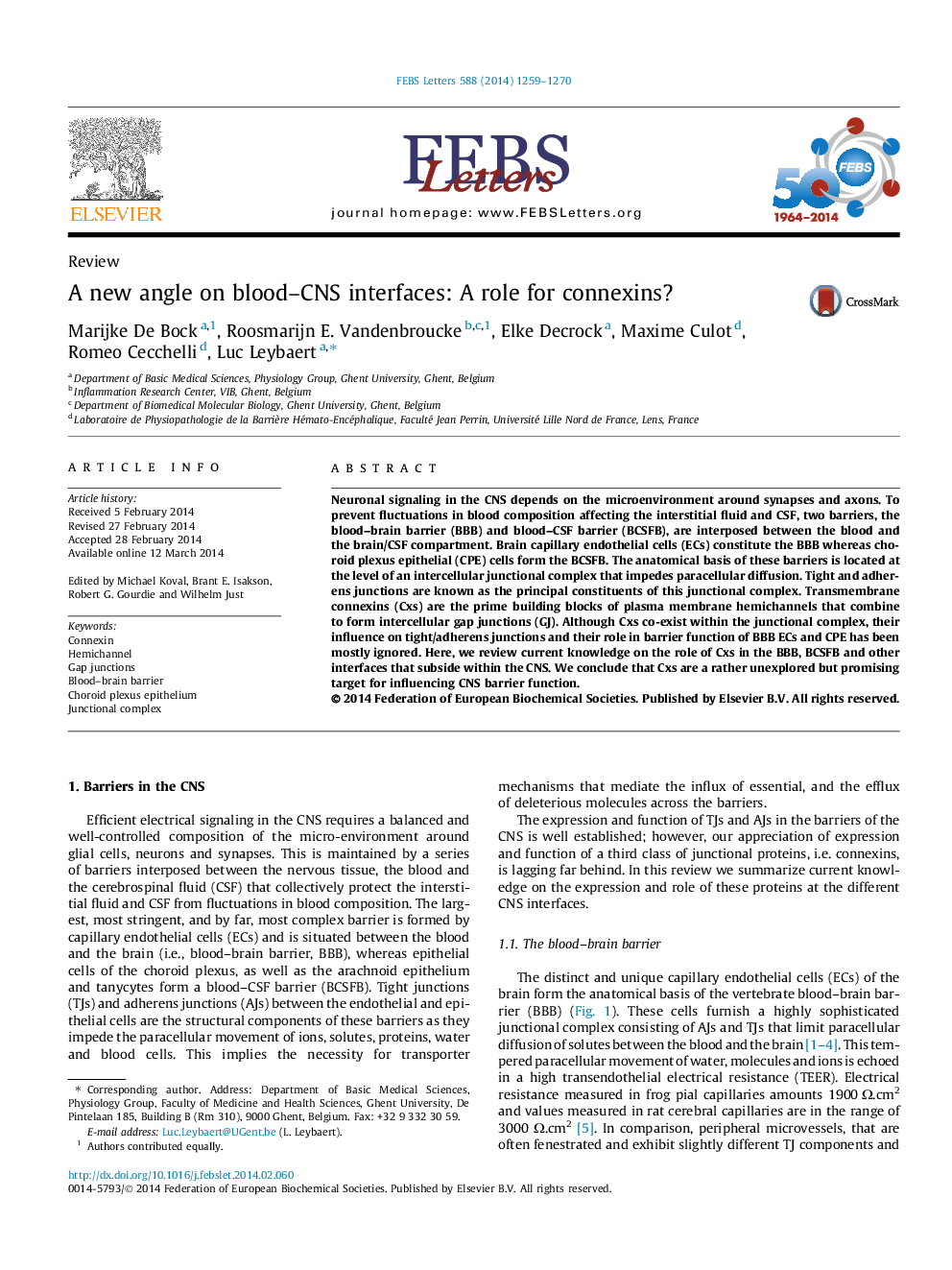| Article ID | Journal | Published Year | Pages | File Type |
|---|---|---|---|---|
| 10870681 | FEBS Letters | 2014 | 12 Pages |
Abstract
Neuronal signaling in the CNS depends on the microenvironment around synapses and axons. To prevent fluctuations in blood composition affecting the interstitial fluid and CSF, two barriers, the blood-brain barrier (BBB) and blood-CSF barrier (BCSFB), are interposed between the blood and the brain/CSF compartment. Brain capillary endothelial cells (ECs) constitute the BBB whereas choroid plexus epithelial (CPE) cells form the BCSFB. The anatomical basis of these barriers is located at the level of an intercellular junctional complex that impedes paracellular diffusion. Tight and adherens junctions are known as the principal constituents of this junctional complex. Transmembrane connexins (Cxs) are the prime building blocks of plasma membrane hemichannels that combine to form intercellular gap junctions (GJ). Although Cxs co-exist within the junctional complex, their influence on tight/adherens junctions and their role in barrier function of BBB ECs and CPE has been mostly ignored. Here, we review current knowledge on the role of Cxs in the BBB, BCSFB and other interfaces that subside within the CNS. We conclude that Cxs are a rather unexplored but promising target for influencing CNS barrier function.
Keywords
Related Topics
Life Sciences
Agricultural and Biological Sciences
Plant Science
Authors
Marijke De Bock, Roosmarijn E. Vandenbroucke, Elke Decrock, Maxime Culot, Romeo Cecchelli, Luc Leybaert,
